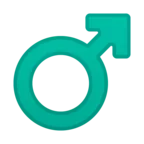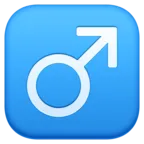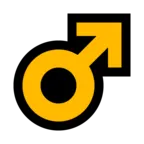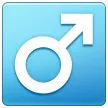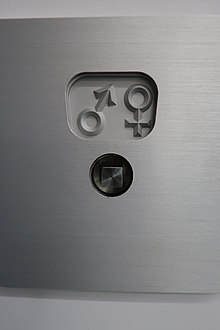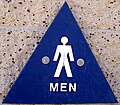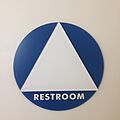Марс (Мужской знак) Эмоджи ♂
Значение Эмоджи
Круг со стрелой, указывающей по диагонали вверх и вправо. Этот символ используется для представления мужского пола. Цвет варьируется на разных платформах, может быть синим, голубым или жёлтым.
Символ «Марс (Мужской знак)» был утвержден как часть Юникода версии 1.1 в 1993 г. и был добавлен в Эмоджи версии 4.0 в 2016 г.
Этот текст также доступен на следующих языках:
English;
Español;
Синонимы
парень, мужик.
| Название в Юникоде | Male Sign |
| Номер в Юникоде | |
| HTML-код | |
| CSS-код | |
| Мнемоника | ♂ |
| Разделы Юникода | Разные символы |
| Версия Юникода | 1.1 (1993) |
| Версия Эмоджи | 4.0 (2016) |
| Раздел Эмоджи | Символы |
| Подраздел Эмоджи | Гендер |
| Alt-код |
Alt 11 |
| Версия | 1.1 |
| Блок | Разные символы |
| Тип парной зеркальной скобки (bidi) | Нет |
| Композиционное исключение | Нет |
| Изменение регистра | 2642 |
| Простое изменение регистра | 2642 |
| Кодировка | hex | dec (bytes) | dec | binary |
|---|---|---|---|---|
| UTF-8 | E2 99 82 | 226 153 130 | 14850434 | 11100010 10011001 10000010 |
| UTF-16BE | 26 42 | 38 66 | 9794 | 00100110 01000010 |
| UTF-16LE | 42 26 | 66 38 | 16934 | 01000010 00100110 |
| UTF-32BE | 00 00 26 42 | 0 0 38 66 | 9794 | 00000000 00000000 00100110 01000010 |
| UTF-32LE | 42 26 00 00 | 66 38 0 0 | 1109786624 | 01000010 00100110 00000000 00000000 |
-
Apple
-
Google
-
Facebook
-
Twitter
-
Mozilla
-
Microsoft
-
Samsung
-
LG
Похожие символы
Наборы с этим символом
Символы гендера
Для обозначения биологического пола у организмов (включая человека) или гендера у человека принято использовать определенные символы.
Два первых символа для обозначения пола были заимствованы из астрономических обозначений. Впервые их стал использовать Карл Линней в 1751 году для обозначения пола растений.
Было придумано множество вариаций символов:
Иные символы гендера, включенные в Юникод 4.1+:
- ⚤ (U+26A4)
- Сцепленный мужской и женский знаки, иногда используется как символ гетеросексуальности.
- ⚢ (U+26A2)
- Два сцеплённых женских знака, как символ лесбийской любви.
- ⚣ (U+26A3)
- Два сцеплённых мужских знака, как символ мужской гомосексуальности.
- ⚦ (U+26A6)
- Мужской знак с черточкой, используется для обозначения трансгендерности.
- ⚪ (U+26AA)
- Окружность среднего размера , заполненная белым, используется для обозначения агендерности, бесполости.
- ⚲ (U+26B2)
- Оригинальный (средневековый) символ Венеры (изображение ручного зеркала), дополнительная горизонтальная полоса появилась в современное время. Сейчас используется для обозначения бесполости.
Спасибо dER_MuKCeP
From Wikipedia, the free encyclopedia
(Redirected from Male sign)
      |
|
|---|---|
|
Gender symbol |
|
| In Unicode | U+2640 ♀ U+2642 ♂
U+26A5 ⚥ U+25B3 △ U+25A1 □ U+25CB ○ |
A gender symbol is a pictogram or glyph used to represent sex and gender, for example in biology and medicine, in genealogy, or in the sociological fields of gender politics, LGBT subculture and identity politics.
In his books Mantissa Plantarum (1767) and Mantissa Plantarum Altera (1771), Carl Linnaeus regularly used the planetary symbols of Mars, Venus and Mercury – ♂, ♀, ☿ – for male, female and hermaphroditic (perfect) flowers, respectively.[1] Botanists now use ⚥ for the last.[2]
In genealogy, including kinship in anthropology and pedigrees in animal husbandry, the geometric shapes △ or □ are used for male and ○ for female. These are also used on public toilets in some countries.
The modern international pictograms used to indicate male and female public toilets, 🚹︎ and 🚺︎, became widely used in the 1960s and 1970s. They are sometimes abstracted to ▽ for male and △ for female.[3]
Biology and medicine[edit]
Gender symbols on a public toilet in Switzerland
The three standard sex symbols in biology are male ♂, female ♀ and hermaphroditic ⚥; originally the symbol for Mercury, ☿, was used for the last. These symbols were first used by Carl Linnaeus in 1751 to denote whether flowers were male (stamens only), female (pistil only) or perfect flowers with both pistils and stamens.[1] (Most flowering and conifer plant species are hermaphroditic and either bear flowers/cones that themselves are hermaphroditic, or bear both male and female flowers/cones on the same plant.) These symbols are now ubiquitous in biology and medicine to indicate the sex of an individual, for example of a patient.[4]
Genealogy[edit]
Minimal kinship chart: a male and female producing male and female offspring
Kinship charts use a triangle △ for male and circle ○ for female.[5][6] Pedigree charts published in scientific papers use an earlier anthropological convention of a square □ for male and a circle ○ for female.[7]
Before a shape distinction was adopted, all individuals had been represented by a circle in Morgan’s 1871 System of Consanguinity and Affinity of Human Family, where gender is encoded in the abbreviations for the kin relation (e.g. M for ‘mother’ and F for ‘father’).[8] W. H. R. River distinguished gender in the words of the language being recorded by writing male kinship terms in all capitals and female kinship terms with normal capitalization. That convention was quite influential for a time, and his convention of prioritizing male kin by placing them to the left and females to the right continues to this day though there have been exceptions, such as Margaret Mead, who placed females to the left.[9]
Public toilets[edit]
The modern gender symbols used for public toilets, 🚹︎ for male and 🚺︎ and female, are pictograms created for the British Rail system in the mid-1960s.[10] Before that, local usage had been more variable. For example, schoolhouse outhouses in the 19th-century United States had ventilation holes in their doors that were shaped like a starburst Sun ✴ or like a crescent Moon ☾, respectively, to indicate whether the toilet was for use by boys or girls.[11] The British Rail pictograms – often color-coded blue and red[citation needed] – are now the norm for marking public toilets in much of the world, with the female symbol distinguished by a triangular skirt or dress, and in early years (and sometimes still) the male symbol stylized like a tuxedo.[3]
These symbols are abstracted to varying degrees in different countries – for example, the circle-and-triangle variants (female) and
(male) commonly found on portable toilets, to the extreme of a triangle △ (representing a skirt or dress) for female and an inverted triangle ▽ (representing a broad-shouldered tuxedo) for male in Lithuania.[3]
In elementary schools, the pictograms may be of children rather than of adults, with the girl distinguished by her hair. In themed locations, such as bars and tourist attractions, a thematic image or figurine of a man and woman or boy and girl may be used.[citation needed]
In Poland, an inverted triangle ▽ is used for male while a circle ○ is used for female.[3]
In mainland China, silhouettes of heads in profile may be used as gender pictograms, generally alongside the written words (男 for male and 女 for female).[citation needed]
-
-
Non-AIGA women’s symbol on a legally mandated circular background in USA
-
Non-AIGA men’s symbol on a legally mandated triangular background in USA
-
Gender-neutral sign in USA, composed of legally mandated circle and triangle
-
Public toilet in China, with female silhouette to the left and male to the right
-
Idiosyncratic symbols in Japan
-
Humorous symbols in Austria
-
Semi-triangular tuxedo and dress shapes in Hungary
-
Triangle-plus-circle symbols in Austria
-
Circle (female) and inverted triangle (male) in Poland
-
Sign in Romania, with men’s and women’s shoes representing gender
-
Male, female and hijra public toilets in India
Sexual orientation and gender politics[edit]
Since the 1970s, variations of gender symbols have been used to express sexual orientation and gender politics. Two interlocking male symbols ⚣ are used to represent gay men while two interlocking female symbols ⚢ are often used to represent lesbians.[12]
Since the 2000s, numerous such variants have been introduced in the context of LGBT culture and politics.[citation needed] Some of these symbols have been adopted into Unicode (in the Miscellaneous Symbols block) beginning with version 4.1 in 2005.
Encoding[edit]
For information on entering these symbols in a document, see Unicode input.
| Unicode name | Symbol | Hexadecimal representation | Decimal representation | Associated Unicode Standard wording[13][14] | |
|---|---|---|---|---|---|
| FEMALE SIGN | ♀ | U+2640 | ♀ | ||
| MALE SIGN | ♂ | U+2642 | ♂ | ||
| MALE AND FEMALE SIGN | ⚥ | U+26A5 | ⚥ | Intersex, androgynous; hermaphrodite (in botany) | |
| WHITE UP-POINTING TRIANGLE | △ | U+25B3 | △ | Trine | |
| WHITE DOWN-POINTING TRIANGLE | ▽ | U+25BD | ▽ | Hamilton operator | |
| WHITE SQUARE | □ | U+25A1 | □ | ||
| WHITE CIRCLE | ○ | U+25CB | ○ | ||
| CIRCLED TRIANGLE | 🟕 | U+1F7D5 | 🟕 | ||
| MENS SYMBOL | 🚹︎ | U+01F6B9 | 🚹 | Man symbol; men’s restroom | |
| WOMENS SYMBOL | 🚺︎ | U+01F6BA | 🚺 | Woman symbol; women’s restroom | |
| BOYS SYMBOL | 🛉︎ | U+1F6C9 | 🛉 | ||
| GIRLS SYMBOL | 🛊︎ | U+1F6CA | 🛊 | ||
| RESTROOM | 🚻︎ | U+01F6BB | 🚻 | Man and woman symbol with divider; unisex restroom[a] |
See also[edit]
- Alchemical symbol
- Astrological symbols
- Fertility symbols
- LGBT symbols
- Miscellaneous Symbols Unicode block
Notes[edit]
- ^ This symbol is often seen on an outer door leading to separate facilities behind inner doors, in which case the glyph has a dividing line separating the men and women symbols
References[edit]
- ^ a b Stearn, William T. (May 1962). «The Origin of the Male and Female Symbols of Biology». Taxon. 11 (4): 109–113. doi:10.2307/1217734. JSTOR 1217734. S2CID 87030547.
- ^ Niki Simpson, Botanical symbols: a new symbol set for new images, Botanical Journal of the Linnean Society, Volume 162, Issue 2, February 2010, Pages 117–129
- ^ a b c d Glancey, Jonathan (11 September 2014). «The genius behind the stick figure toilet signs». BBC Future.
In Poland, meanwhile, you can come across lavatories indicating ‘gents’ with a triangle and ‘ladies’ with a circle, while in Lithuania men are represented by an inverted pyramid and women by a pyramid standing the right way up. […] One of the best early examples of intuitive global signs for public lavatories was that created for British Rail in the mid-1960s. […] In the 1970s, the British example was developed on a more comprehensive basis in the United States. In 1974, the US Department of Transportation commissioned the American Institute of Graphic Arts to create a set of pictograms to be used throughout public transport networks whether road, rail, air or sea.
- ^ Han, Zhigang; et al. (25 September 2009). «A HIV-1 heterosexual transmission chain in Guangzhou, China: a molecular epidemiological study». Virology Journal. BioMed Central. 6 (148): Figure 1. doi:10.1186/1743-422X-6-148. PMC 2761389. PMID 19778458.
(Mars male gender symbol) indicates male; (female Venus gender symbol) indicates female
- ^ «Kin Diagrams». www.umanitoba.ca. Retrieved 2019-12-02.
- ^ «Kin Diagrams». www.umanitoba.ca. Retrieved 2019-12-02.
- ^ Schott, G D (24 Dec 2005). «Sex symbols ancient and modern: their origins and iconography on the pedigree». BMJ. British Medical Journal. 331 (7531): 1509–1510. doi:10.1136/bmj.331.7531.1509. PMC 1322246. PMID 16373733.
- ^ Morgan, Lewis Henry (1870). Systems of consanguinity and affinity of the human family. University of California Libraries. [Washington, Smithsonian Institution.
- ^ Wilson, Ara (2018-07-24). «Visual Kinship». History of Anthropology Review. Retrieved 2019-12-02.
- ^ Glancey, Jonathan (11 September 2014). «The genius behind stick figure toilet signs». BBC.
Classics of design: One of the best early examples of intuitive global signs for public lavatories was that created for British Rail in the mid-1960s. As part of a major modernisation programme, the state railway was given a new and all-embracing corporate identity by DRU [Design Research Unit], a design studio founded by Marcus Brumwell and Misha Black in 1943. Working with Margaret Calvert and Jock Kinneir, who designed a distinctive Rail Alphabet typeface based on Helvetica, DRU devised a clean-cut and convincingly modern aesthetic that was applied to all locomotives, trains, stations, published material and, yes, signs for lavatories.
(includes picture of the ideogram, which is copyright). - ^ Eric Sloane (1972, 2007) The Little Red Schoolhouse: A Sketchbook of Early American Education. Doubleday & Co.; Dover Books.
- ^ «Symbolism». LGBTQA+ WebCenter. Eastern Illinois University. Archived from the original on 12 February 2016. Retrieved 31 December 2015.
Since the 1970s, gays have used double interlocking male symbols to represent gay men. Double interlocking female symbols are often been used [sic] to symbolize lesbianism, but some feminists have instead used the double female symbols to represent sisterhood among women and three interlocking female symbols to denote lesbianism.
- ^ «Miscellaneous Symbols | Gender symbols» (PDF). Unicode Consortium. Retrieved 2020-06-28.
- ^ «Transport and Map Symbols – Range: 1F680–1F6FF – 1F6B9» (PDF). Unicode Consortium. Retrieved 2020-07-01.
External links[edit]
From Wikipedia, the free encyclopedia
(Redirected from Male sign)
      |
|
|---|---|
|
Gender symbol |
|
| In Unicode | U+2640 ♀ U+2642 ♂
U+26A5 ⚥ U+25B3 △ U+25A1 □ U+25CB ○ |
A gender symbol is a pictogram or glyph used to represent sex and gender, for example in biology and medicine, in genealogy, or in the sociological fields of gender politics, LGBT subculture and identity politics.
In his books Mantissa Plantarum (1767) and Mantissa Plantarum Altera (1771), Carl Linnaeus regularly used the planetary symbols of Mars, Venus and Mercury – ♂, ♀, ☿ – for male, female and hermaphroditic (perfect) flowers, respectively.[1] Botanists now use ⚥ for the last.[2]
In genealogy, including kinship in anthropology and pedigrees in animal husbandry, the geometric shapes △ or □ are used for male and ○ for female. These are also used on public toilets in some countries.
The modern international pictograms used to indicate male and female public toilets, 🚹︎ and 🚺︎, became widely used in the 1960s and 1970s. They are sometimes abstracted to ▽ for male and △ for female.[3]
Biology and medicine[edit]
Gender symbols on a public toilet in Switzerland
The three standard sex symbols in biology are male ♂, female ♀ and hermaphroditic ⚥; originally the symbol for Mercury, ☿, was used for the last. These symbols were first used by Carl Linnaeus in 1751 to denote whether flowers were male (stamens only), female (pistil only) or perfect flowers with both pistils and stamens.[1] (Most flowering and conifer plant species are hermaphroditic and either bear flowers/cones that themselves are hermaphroditic, or bear both male and female flowers/cones on the same plant.) These symbols are now ubiquitous in biology and medicine to indicate the sex of an individual, for example of a patient.[4]
Genealogy[edit]
Minimal kinship chart: a male and female producing male and female offspring
Kinship charts use a triangle △ for male and circle ○ for female.[5][6] Pedigree charts published in scientific papers use an earlier anthropological convention of a square □ for male and a circle ○ for female.[7]
Before a shape distinction was adopted, all individuals had been represented by a circle in Morgan’s 1871 System of Consanguinity and Affinity of Human Family, where gender is encoded in the abbreviations for the kin relation (e.g. M for ‘mother’ and F for ‘father’).[8] W. H. R. River distinguished gender in the words of the language being recorded by writing male kinship terms in all capitals and female kinship terms with normal capitalization. That convention was quite influential for a time, and his convention of prioritizing male kin by placing them to the left and females to the right continues to this day though there have been exceptions, such as Margaret Mead, who placed females to the left.[9]
Public toilets[edit]
The modern gender symbols used for public toilets, 🚹︎ for male and 🚺︎ and female, are pictograms created for the British Rail system in the mid-1960s.[10] Before that, local usage had been more variable. For example, schoolhouse outhouses in the 19th-century United States had ventilation holes in their doors that were shaped like a starburst Sun ✴ or like a crescent Moon ☾, respectively, to indicate whether the toilet was for use by boys or girls.[11] The British Rail pictograms – often color-coded blue and red[citation needed] – are now the norm for marking public toilets in much of the world, with the female symbol distinguished by a triangular skirt or dress, and in early years (and sometimes still) the male symbol stylized like a tuxedo.[3]
These symbols are abstracted to varying degrees in different countries – for example, the circle-and-triangle variants (female) and
(male) commonly found on portable toilets, to the extreme of a triangle △ (representing a skirt or dress) for female and an inverted triangle ▽ (representing a broad-shouldered tuxedo) for male in Lithuania.[3]
In elementary schools, the pictograms may be of children rather than of adults, with the girl distinguished by her hair. In themed locations, such as bars and tourist attractions, a thematic image or figurine of a man and woman or boy and girl may be used.[citation needed]
In Poland, an inverted triangle ▽ is used for male while a circle ○ is used for female.[3]
In mainland China, silhouettes of heads in profile may be used as gender pictograms, generally alongside the written words (男 for male and 女 for female).[citation needed]
-
-
Non-AIGA women’s symbol on a legally mandated circular background in USA
-
Non-AIGA men’s symbol on a legally mandated triangular background in USA
-
Gender-neutral sign in USA, composed of legally mandated circle and triangle
-
Public toilet in China, with female silhouette to the left and male to the right
-
Idiosyncratic symbols in Japan
-
Humorous symbols in Austria
-
Semi-triangular tuxedo and dress shapes in Hungary
-
Triangle-plus-circle symbols in Austria
-
Circle (female) and inverted triangle (male) in Poland
-
Sign in Romania, with men’s and women’s shoes representing gender
-
Male, female and hijra public toilets in India
Sexual orientation and gender politics[edit]
Since the 1970s, variations of gender symbols have been used to express sexual orientation and gender politics. Two interlocking male symbols ⚣ are used to represent gay men while two interlocking female symbols ⚢ are often used to represent lesbians.[12]
Since the 2000s, numerous such variants have been introduced in the context of LGBT culture and politics.[citation needed] Some of these symbols have been adopted into Unicode (in the Miscellaneous Symbols block) beginning with version 4.1 in 2005.
Encoding[edit]
For information on entering these symbols in a document, see Unicode input.
| Unicode name | Symbol | Hexadecimal representation | Decimal representation | Associated Unicode Standard wording[13][14] | |
|---|---|---|---|---|---|
| FEMALE SIGN | ♀ | U+2640 | ♀ | ||
| MALE SIGN | ♂ | U+2642 | ♂ | ||
| MALE AND FEMALE SIGN | ⚥ | U+26A5 | ⚥ | Intersex, androgynous; hermaphrodite (in botany) | |
| WHITE UP-POINTING TRIANGLE | △ | U+25B3 | △ | Trine | |
| WHITE DOWN-POINTING TRIANGLE | ▽ | U+25BD | ▽ | Hamilton operator | |
| WHITE SQUARE | □ | U+25A1 | □ | ||
| WHITE CIRCLE | ○ | U+25CB | ○ | ||
| CIRCLED TRIANGLE | 🟕 | U+1F7D5 | 🟕 | ||
| MENS SYMBOL | 🚹︎ | U+01F6B9 | 🚹 | Man symbol; men’s restroom | |
| WOMENS SYMBOL | 🚺︎ | U+01F6BA | 🚺 | Woman symbol; women’s restroom | |
| BOYS SYMBOL | 🛉︎ | U+1F6C9 | 🛉 | ||
| GIRLS SYMBOL | 🛊︎ | U+1F6CA | 🛊 | ||
| RESTROOM | 🚻︎ | U+01F6BB | 🚻 | Man and woman symbol with divider; unisex restroom[a] |
See also[edit]
- Alchemical symbol
- Astrological symbols
- Fertility symbols
- LGBT symbols
- Miscellaneous Symbols Unicode block
Notes[edit]
- ^ This symbol is often seen on an outer door leading to separate facilities behind inner doors, in which case the glyph has a dividing line separating the men and women symbols
References[edit]
- ^ a b Stearn, William T. (May 1962). «The Origin of the Male and Female Symbols of Biology». Taxon. 11 (4): 109–113. doi:10.2307/1217734. JSTOR 1217734. S2CID 87030547.
- ^ Niki Simpson, Botanical symbols: a new symbol set for new images, Botanical Journal of the Linnean Society, Volume 162, Issue 2, February 2010, Pages 117–129
- ^ a b c d Glancey, Jonathan (11 September 2014). «The genius behind the stick figure toilet signs». BBC Future.
In Poland, meanwhile, you can come across lavatories indicating ‘gents’ with a triangle and ‘ladies’ with a circle, while in Lithuania men are represented by an inverted pyramid and women by a pyramid standing the right way up. […] One of the best early examples of intuitive global signs for public lavatories was that created for British Rail in the mid-1960s. […] In the 1970s, the British example was developed on a more comprehensive basis in the United States. In 1974, the US Department of Transportation commissioned the American Institute of Graphic Arts to create a set of pictograms to be used throughout public transport networks whether road, rail, air or sea.
- ^ Han, Zhigang; et al. (25 September 2009). «A HIV-1 heterosexual transmission chain in Guangzhou, China: a molecular epidemiological study». Virology Journal. BioMed Central. 6 (148): Figure 1. doi:10.1186/1743-422X-6-148. PMC 2761389. PMID 19778458.
(Mars male gender symbol) indicates male; (female Venus gender symbol) indicates female
- ^ «Kin Diagrams». www.umanitoba.ca. Retrieved 2019-12-02.
- ^ «Kin Diagrams». www.umanitoba.ca. Retrieved 2019-12-02.
- ^ Schott, G D (24 Dec 2005). «Sex symbols ancient and modern: their origins and iconography on the pedigree». BMJ. British Medical Journal. 331 (7531): 1509–1510. doi:10.1136/bmj.331.7531.1509. PMC 1322246. PMID 16373733.
- ^ Morgan, Lewis Henry (1870). Systems of consanguinity and affinity of the human family. University of California Libraries. [Washington, Smithsonian Institution.
- ^ Wilson, Ara (2018-07-24). «Visual Kinship». History of Anthropology Review. Retrieved 2019-12-02.
- ^ Glancey, Jonathan (11 September 2014). «The genius behind stick figure toilet signs». BBC.
Classics of design: One of the best early examples of intuitive global signs for public lavatories was that created for British Rail in the mid-1960s. As part of a major modernisation programme, the state railway was given a new and all-embracing corporate identity by DRU [Design Research Unit], a design studio founded by Marcus Brumwell and Misha Black in 1943. Working with Margaret Calvert and Jock Kinneir, who designed a distinctive Rail Alphabet typeface based on Helvetica, DRU devised a clean-cut and convincingly modern aesthetic that was applied to all locomotives, trains, stations, published material and, yes, signs for lavatories.
(includes picture of the ideogram, which is copyright). - ^ Eric Sloane (1972, 2007) The Little Red Schoolhouse: A Sketchbook of Early American Education. Doubleday & Co.; Dover Books.
- ^ «Symbolism». LGBTQA+ WebCenter. Eastern Illinois University. Archived from the original on 12 February 2016. Retrieved 31 December 2015.
Since the 1970s, gays have used double interlocking male symbols to represent gay men. Double interlocking female symbols are often been used [sic] to symbolize lesbianism, but some feminists have instead used the double female symbols to represent sisterhood among women and three interlocking female symbols to denote lesbianism.
- ^ «Miscellaneous Symbols | Gender symbols» (PDF). Unicode Consortium. Retrieved 2020-06-28.
- ^ «Transport and Map Symbols – Range: 1F680–1F6FF – 1F6B9» (PDF). Unicode Consortium. Retrieved 2020-07-01.
External links[edit]
Для обозначения биологического пола у организмов (включая человека) или гендера у человека принято использовать определенные символы.
Исходные символы
Два первых символа для обозначения пола были заимствованы из астрономических обозначений. Впервые их стал использовать Карл Линней в 1751 году для обозначения пола растений.[1]
Другие символы, связанные с полом
Было придумано множество вариаций символов:
Иные символы гендера, включенные в Юникод 4.1+:
- ⚤ (U+26A4)
- Сцепленный мужской и женский знаки, иногда используется как символ гетеросексуальности.
- ⚢ (U+26A2)
- Два сцеплённых женских знака, как символ лесбийской любви.
- ⚣ (U+26A3)
- Два сцеплённых мужских знака, как символ мужской гомосексуальности.
- ⚦ (U+26A6)
- Мужской знак с черточкой, используется для обозначения трансгендерности.
- ⚪ (U+26AA)
- Среднего размера окружности, заполненная белым, используется для обозначения асексуальности, бесполости.
- ⚲ (U+26B2)
- Neuter.
| Символы гендера на Викискладе? |
Примечания
- ↑ The Origin of the Male and Female Symbols of Biology, William T. Stearn, Taxon, Vol. 11, No. 4 (May, 1962), pp. 109—113
См. также
- Астрономические символы
- Символика ЛГБТ-движения
Ссылки
- Decode Unicode, showing all Unicode symbols
| ♀ ♂ × | |
|---|---|
| Символ пола | |
| В Unicode | U + 2640 ♀ ЖЕНСКИЙ ЗНАК
U + 2642 ♂ МУЖСКОЙ ЗНАК U + 00D7 × ЗНАК УМНОЖЕНИЯ (обозначающий гибрид ) |
A гендерный символ пиктограмма или глиф, используемые для обозначения биологических пол и гендер в биологии или медицине, в генеалогии или в социологических областях гендерной политики, субкультуры ЛГБТ и политика идентичности.
В его Mantissa Plantarum (1767) и Mantissa Plantarum altera (1771), Карл Линней регулярно использовал ♂, ♀ и (кратко) ☿ (впоследствии ×) для слов «мужчина», «женщина» и гибридные растения соответственно.
Пиктограммы, используемые для обозначения мужских и женских туалетов общественных туалетов, стали широко использоваться с 1960-х годов.
Содержание
- 1 Биология и медицина
- 1.1 Родословная диаграммы
- 2 Истоки
- 3 Социология
- 3.1 Общественные туалеты
- 3.2 Сексуальная ориентация и гендерная политика
- 4 Кодировка
- 5 См. также
- 6 Примечания
- 7 Внешние ссылки
Биология и медицина
Три стандартных символа пола : символ мужской ♂ и женский символ ♀, а также гибрид символ ×. Впервые они были использованы для обозначения эффективного пола растений (т. Е. Пола особи в данной гибриде, поскольку большинство растений гермафродиты ) Карлом Линнеем в 1751 году. Символы мужского и женского пола до сих пор используются в научных публикациях для обозначения пола человека, например пациента. В биологии Линней первоначально использовал символ ртути, ☿, для гибрида, но отказался от него в пользу знака умножения, ×, и этот стиль используется сегодня (например, Platanus × acerifolia для лондонской плоскости, естественный гибрид P. orientalis (восточный план) и P. occidentalis (американский платан).)
Родословные
Родословные, опубликованные в научных публикациях, теперь чаще используют квадрат для мужчин и кружок для женщин.
Происхождение
Эти символы образованы от начальных букв древнегреческих названий классических планет Марса, Венеры и Меркурия и связаны с алхимическими элементами железом, медью и ртутью (ртутью) соответственно. Джозеф Юстус Скалигер предположил, что мужской символ связан с Марсом, богом войны, потому что он напоминает щит и копье; и что женский символ связан с Венерой, богиней красоты, потому что он напоминает бронзовое зеркало с ручкой. Более поздние ученые отвергают это как вымысел, предпочитая «заключение французского классика Клода де Сомеза (Салмасиус, 1588–1683) о том, что эти символы […] являются производными от сокращений греческого письма от греческого названия планет ».
Использование форм в качестве гендерных символов могло появиться из диаграмм родства в антропологии, где круг представляет женщину, а треугольник — мужчину. Самая ранняя форма диаграммы родства, которая отображает это, относится к 1871 году: Система родства и родства человеческой семьи Моргана. Система У. Х. Р. Ривера перешла на большие буквы для мужчин и маленькие буквы для женщин, в то время как в уравнениях алгебраического типа числитель обозначает мужчину, а знаменатель — женщину. Позже, в «Танцевальной диаграмме» К. Г. Селигмана 1910 г., обведенные кружки изображали женщин, а заштрихованные кружки — мужчин.
Социология
Общественные туалеты
Гендерные пиктограммы часто используются для обозначения общественных туалетов.
Стандарт Американский институт графических искусств символы
Символ общественного туалета для женщин, не принадлежащих AIGA
Символ общественного туалета для мужчин, не принадлежащих AIGA
Сексуальная ориентация и гендерная политика
С В 1970-е годы вариации гендерных символов также использовались для выражения сексуальной ориентации и политической идеологии. Первым примером этого было использование двух взаимосвязанных мужских символов для обозначения мужского гомосексуализма. С 2000-х годов множество таких вариантов было введено в контексте ЛГБТ культуры и политики. Некоторые из этих символов были приняты в Unicode (в блоке Miscellaneous Symbols ), начиная с версии 4.1 (2005 г.):
Encoding
| Unicode name | шестнадцатеричный | десятичный | Значение | |
|---|---|---|---|---|
| ЖЕНСКИЙ ЗНАК | ♀ | U + 2640 | ♀ | Женский. |
| МУЖСКОЙ ЗНАК | ♂ | U + 2642 | ♂ | Male. |
| Mercury | ☿ | U + 263F | ☿ | Гибрид. (заменено на ×). |
| ДВОЙНОЙ МУЖСКОЙ ЗНАК | ⚣ | U + 26A3 | ⚣ | Гей-мужчина. |
| ДВОЙНОЙ ЖЕНСКИЙ ЗНАК | ⚢ | U + 26A2 | ⚢ | Лесбиянка. |
| БЛОКИРОВКА ЖЕНСКОГО И МУЖСКОГО ЗНАКА | ⚤ | U + 26A4 | ⚤ | Гетеросексуальность. |
| МУЖЧИНА С ИНСУЛЬТОМ И МУЖСКОЕ И ЖЕНСКОЕ ЗНАК | ⚧ | U + 26A7 | ⚧ | Трансгендер |
| МУЖСКОЙ ПРИЗНАК | ⚦ | U + 26A6 | ⚦ | Трансгендер |
| МУЖСКОЙ И ЖЕНСКОЙ ПРИЗНАК | ⚥ | U + 26A5 | ⚥ | Мужчина и женщина; трансгендер |
| СРЕДНИЙ БЕЛЫЙ КРУГ | ⚪ | U + 26AA | ⚪ | агендер, бесполый, бесполый; помолвлен, обручен. |
| МУЖСКОЙ СИМВОЛ | 🚹 | U + 01F6B9 | 🚹 | Мужчина символ; мужской туалет. |
| ЖЕНСКИЙ СИМВОЛ | 🚺 | U + 01F6BA | 🚺 | Символ женщины; женский туалет |
| RESTROOM | 🚻 | U + 01F6BB | 🚺 | символ мужчины и женщины с разделителем; туалет унисекс. |
См. также
- Алхимический символ
- Астрологические символы
- Символы плодородия
- Разные символы Блок Unicode

